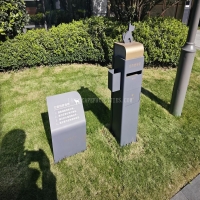Welcome to the website for landscape facilities products and knowledge.
How does the bin’s design accommodate waste disposal in areas with specific cultural sensitivities?
Waste disposal is a universal need, but cultural sensitivities can significantly influence how bins are designed and used in public spaces. In regions where certain materials or practices are taboo, bin designs must adapt to ensure both functionality and respect for local customs.
For instance, in some cultures, separating organic and non-organic waste is not just a matter of sustainability but also a religious or traditional requirement. Bins in these areas often feature clear, color-coded compartments with symbols or text in local languages to guide proper disposal. This minimizes contamination and aligns with community values.
In places where waste handling is stigmatized, touchless or foot-operated bins are prioritized to reduce direct contact, addressing hygiene concerns while respecting social norms. Additionally, bins in conservative societies may be designed with discreet openings or placed in less visible locations to avoid drawing attention to waste.
Material choices also play a role. In eco-conscious communities, bins made from recycled or biodegradable materials reinforce environmental values, while in urban areas, durable, vandal-resistant designs ensure longevity.
Ultimately, thoughtful bin design bridges practicality and cultural respect, fostering cleaner, more inclusive public spaces. By integrating local feedback and innovative features, municipalities can create waste solutions that resonate with diverse populations.
Related search:

Recommendation
Outdoor cat and dog feces trash can; Community pet trash can; Metal multi-color design